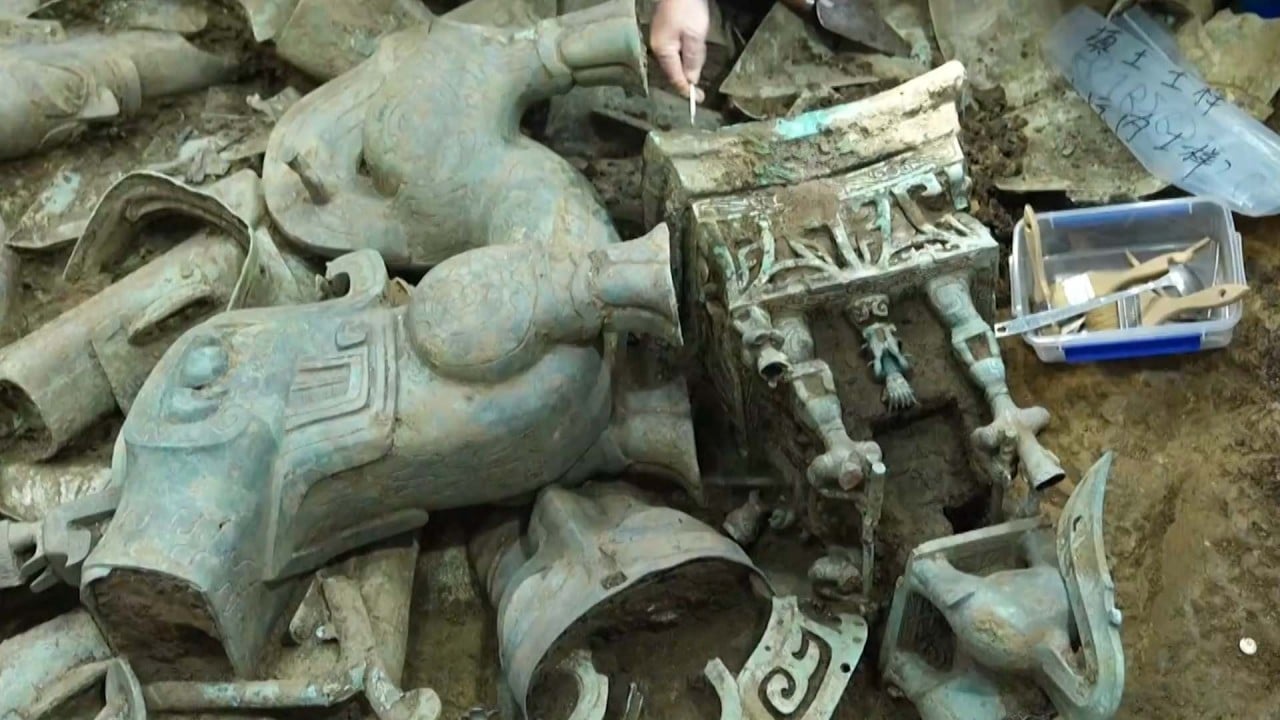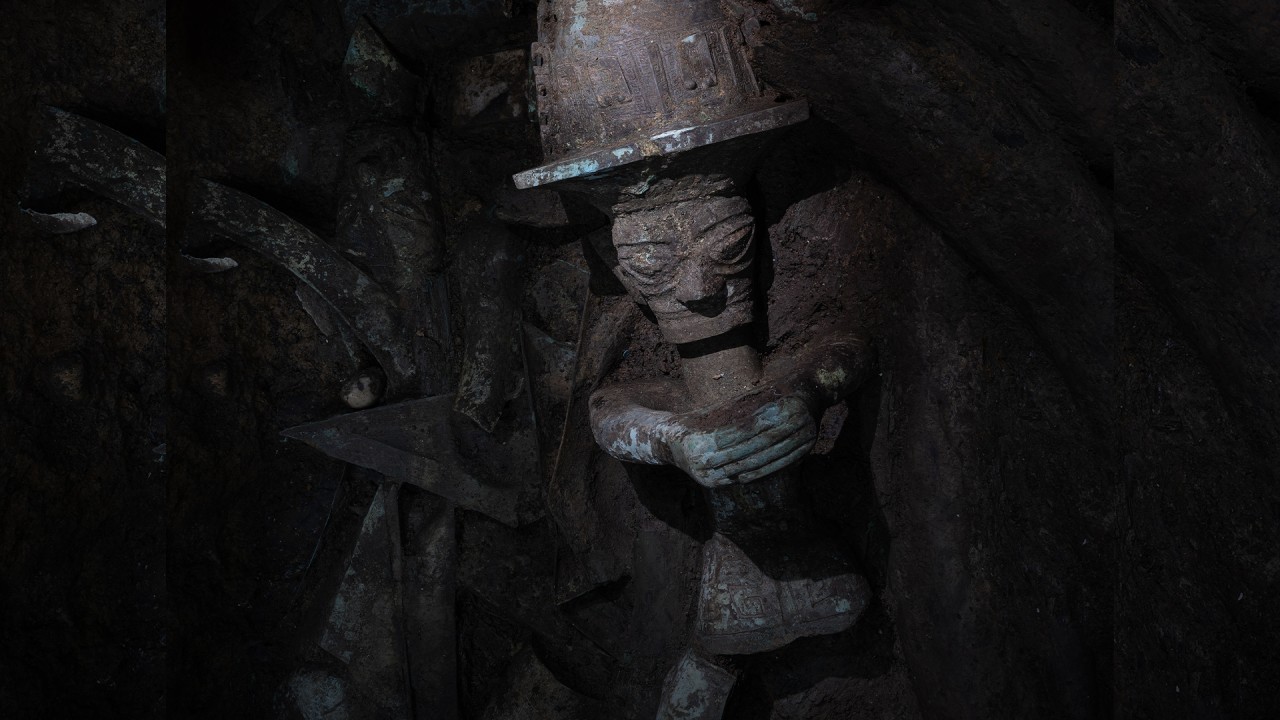
Explainer | Why archaeologists are so excited by China’s Sanxingdui ruins
- Ancient treasure trove reveals deep connections between the mysterious Shu kingdom and other early Chinese settlements
- Thousands of intricate relics of gold, bronze, jade and ivory have been found, all relating to sacrificial activities
Since its discovery, Chinese archaeologists have unearthed about 13,000 items from the site, including 3,155 largely complete artefacts.
What have the experts found?
Archaeologists have uncovered a treasure trove of bronze, gold, jade and ivory objects, all related to sacrificial activities, in a series of pits that lay undisturbed until the mid-1980s.
A gold mask discovered last year attracted international attention and has been dated back about 3,000 years. Archaeologists also unearthed the largest bronzeware so far found at the site – another mask measuring 74cm tall and 135cm wide (29 x 53 inches).
When were the ruins discovered?
The Sanxingdui ruins were first uncovered in the late 1920s, in Guanghan city, about 40km (25 miles) north of the provincial capital Chengdu. The breakthrough discovery came six decades later – two sacrificial pits containing more than 1,700 artefacts.
In 2019, a third pit was revealed, just a few dozen metres from the first two. Archaeologists found another five pits the following year.
As of May, archaeologists had completed field excavations of pits No 3 and No 4, according to state news agency Xinhua. Artefacts from No 5 and No 6 pits are undergoing laboratory cleaning, while No 7 and No 9 pits are in the extraction stage.
An ancient puzzle
The Sanxingdui ruins are believed to be at the heart of the mysterious Shu kingdom of 4,500 years ago. So far, no written records have been found to explain where these ancient people came from or the significance of the relics they left behind.
Treasures from mystery civilisation could rewrite history of China
Ivory artefacts discovered at Sanxingdui differ from similar objects found at the Jinsha archaeological site in Chengdu, for example. Most of the Sanxingdui ivories were fired before they were buried, while at Jinsha the pieces were interred without firing.
Experts said this could reflect the different uses of ivory in the two regions, but the specific purpose of the items at both sites was still unknown.
Ran Honglin, director of the Sanxingdui Cultural Relics and Archaeological Research Institute, said the discoveries so far related only to high-ranking people engaging in ritual activities, leaving experts unclear about the lives of ordinary society.
“We want to know more about where the people of Sanxingdui lived, where they died and where the objects used in rituals were made,” he told Xinhua.
“Our next step is to clarify the palace area, the sacrificial area and the handicraft workshop area of the Sanxingdui site, so that we can restore the overall appearance of the capital of the ancient kingdom.”
Why are the ruins so important?
The Sanxingdui site had close cultural links with other parts of China and these connections are evident in some of the ancient treasures, making the Shu kingdom an important part of Chinese civilisation, archaeologists said.
As an example, Ran pointed to a bronze sculpture discovered in pit No 8. A snake’s body with a human head stands on a square pedestal, topped by a ceremonial vessel known as a zun.
“The bronze sculpture of human head and snake body is characteristic of the ancient Shu civilisation, while the square pedestal represents the pre-Western Zhou dynasty [1046BC – 771BC] in northwestern China and the zun represents the culture of central China,” he said.
“These three factors are now blended into one artefact, demonstrating that Sanxingdui is an important part of Chinese civilisation.”
Ran said some of the bronze and jade artefacts discovered in Sanxingdui were similar to those found in northwestern, central and southern China, in the provinces of Gansu, Shaanxi, Henan and Shandong.
The people of Sanxingdui therefore had similar beliefs to inhabitants of other parts of China, he said.
The public will be able to see the latest remarkable treasures at the Sanxingdui Museum when a 44,000 square metres (473,612 square feet) exhibition hall opens in 2023.



